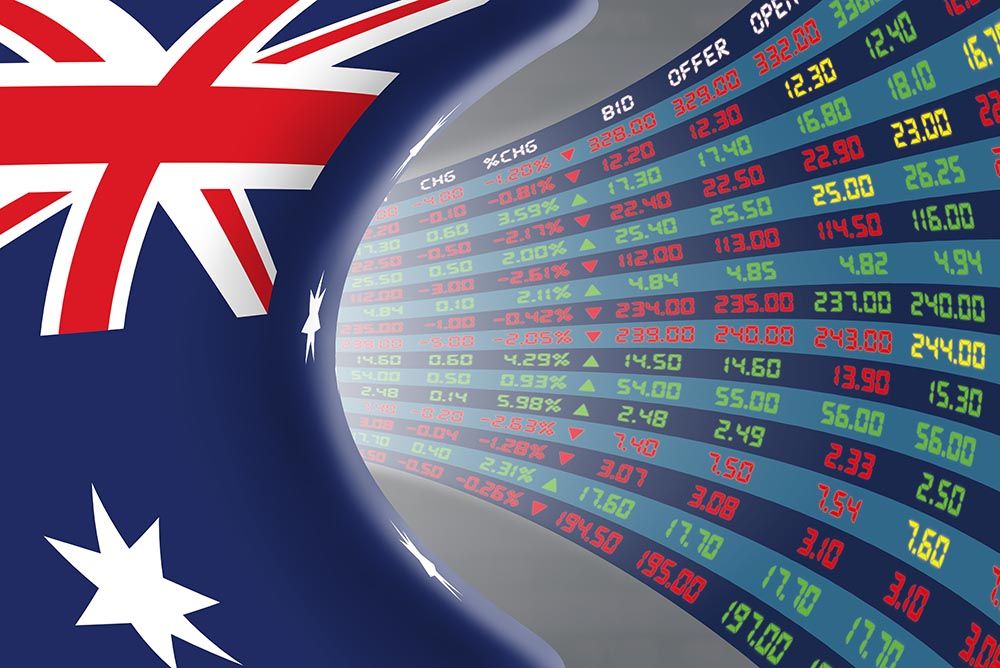The Australian Dollar Pops after G20 Trade Breakthrough but Analysts Say Gains to Soon Fade Away
- Written by: James Skinner
-

Image © William W. Potter, Adobe Stock
- AUD hits three-month high following U.S.-China G20 detente.
- But analysts say rally will fade as "trade war" is far from over.
- Rally comes at start of busy week for Australian economic data.
The Australian Dollar surged into a new week Monday after U.S. and Chinese Presidents reached a “trade war” truce at November’s G20 summit, but analysts are warning against reading too much into the accord.
President Donald Trump has agreed to delay, for 90 days, an increase in the tariff rate levied on $250 billion of Chinese goods imported into U.S. each year.
In return, China will increase the amount of agricultural goods it imports from the U.S. and both countries will enter talks aimed at resolving a series of contentious issues.
With January 01, 2019 previously expected to see U.S. tariffs rise from 10% to 25%, the weekend “deal” averts an imminent escalation of the so-called trade war between the world’s two largest economies.
However, and despite White House claims to the contrary, analysts are saying the deal does nothing more than delay what is still an inevitable escalation of hostilities between the two.
“There really wasn’t much of a “deal” agreed. For one thing, the US and China failed to issue a joint statement laying out the framework going forward. Instead, the US and China issued separate statements on their take of what went down,” says Sue Trinh, Asia head of FX strategy at RBC Capital Markets. “There are significant gaps between what the US thinks China has agreed and what China thinks the US has agreed.”
Trinh says a lot will depend on what happens over the next 90 days, but the optimism that buoyed the Australian Dollar Monday is unlikely to last due to both parties appearing to be on separate pages about exactly what happens next.
The White House emphasised in its statement that tariffs against China will still rise to 25%, after 90 days, if the two sides are unable to resolve the remaining issues between them. But China’s representatives have told local press that there will not be any tariff increases, while failing to mention the 90 day period.
The White House also says in its statement that there will be an immediate discussion about China’s alleged theft of U.S. intellectual property and other “unfair” trade practices. But China has merely said it and the U.S. have agreed to work toward a consensus on trade issues.
The tariff conflict between the U.S. and China has hurt the Australian Dollar because the Antipodean currency is underwritten by a mammoth commodity trade with China.
This not only places the Aussie at the mercy of mood swings in the commodity market, but also investors’ changing sentiments toward the Chinese economy.
“USD can fall further over the next day or two in further reaction to the Presidents meeting. But we are not optimistic of a speedy resolution of their trade frictions. China is unlikely to do more than tweak its ‘Made in China 2025’ plan that so irks the US government (see here for details). If no deal is reached within 90 days, the US will increase the tariff rate on $US 200 billion of imports from China from 10% to 25%. Therefore, we expect the USD to unwind its losses by the end of the week,” says Joseph Capurso, a currency strategist at Commonwealth Bank of Australia. “As the USD unwinds its weakness later this week, AUD (and CNH) can give up its gains.”
The AUD/USD rate was quoted 0.94% higher at 0.7376 Monday, after having touched a three-month high during the overnight session.
The Pound-to-Australian-Dollar rate was quoted -0.22% lower at 1.7359, with the Aussie being one of only four G10 currencies to rise against Sterling Monday.
“The long awaited squeeze in the AUD has materialised, though we do not advocate chasing it higher. The domestic data flow is positive, but this is well understood by markets and largely priced in. Separately, the global environment remains clouded, and we see a number of risk events ahead (US-China tension, Brexit) that could take a toll on the AUD,” says Nathaniel Hartley, a currency strategist at Australia & New Zealand Banking Group.
The AUD/USD rate is now trading close to 0.7, but Hartley says “fair value” for it is actually around 0.70, suggesting that a downward correction is likely sooner or later.
Monday’s price action comes at the beginning of what is set to be a busy week for the Australian Dollar
Tuesday morning will see the Reserve Bank of Australia (RBA) announce its latest interest rate decision and provide the market with an updated assessment of the economy.
None expect the RBA to raise rates this week so currency traders will scrutinise the accompanying statement closely for clues about when the bank might finally lift the cash rate from its current record low of 1.5%.
GDP data due out on Wednesday morning and retail sales figures set to release in the early hours of Thursday will be evaluated with the same interest rate question in mind.
“While the Q3 GDP report will provide a stocktake on the economy’s starting point, focus will be on the October data due. With Building approvals and House Prices both likely to be slowing, we will focus on retail sales to see if the persistent weakness in those sectors has started to leak into consumer behaviour. We have below consensus forecasts for most of these releases,” Hartley adds.
Advertisement
Bank-beating exchange rates. Get up to 5% more foreign exchange by using a specialist provider to get closer to the real market rate and avoid the gaping spreads charged by your bank when providing currency. Learn more here




